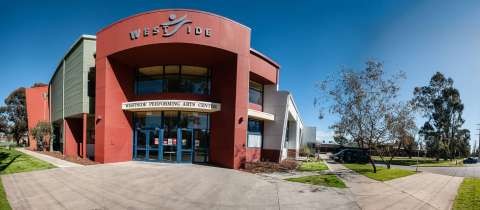Seafaring drones on Lake Superior will soon allow a team of Cornell scientists to examine fresh details about the abundance and distribution of forage fish – species, such as zooplankton and shrimp, which provide nourishment for sportier marine species higher on the food chain.
Two Saildrone Explorers – 23-foot-long autonomous wind-and-solar-powered research vehicles that look like surfboards outfitted with sonar and other sensors – launched Aug. 9 from Ashland, Wisconsin. They will be part of an acoustic survey of the fish and biomass of western Lake Superior. It runs now until Sept. 3.
Forage fish of Lake Superior include several species of cisco, whitefish and rainbow smelt that comprise the diet of a variety of salmon and lake trout. The saildrones will be directly compared with traditional acoustic monitoring by ships.
“We will also use this acoustic data to gain insight into the vertical migration (the synchronized movement of aquatic life) of a shrimp-like zooplankton called Mysis diluviana,” said Kayden Nasworthy, a graduate student in natural resources, whose overall goal is to assess Lake Superior’s health. “The zooplankton are important high-quality prey for fish.”
The work is a cooperative project led by the U.S. Geological Survey (USGS) and the Great Lakes Fishery Commission, with drones provided by Saildrones, Inc., and Cornell leading the scientific analysis.
Scientific information collected from this research will help to inform the sustainable management of the Great Lakes fishing industry, valued at $7 billion a year, according to the USGS.
In addition to the two Saildrone Explorers, two long-range autonomous underwater vehicles (LRAUVs), developed by the Monterey Bay Aquarium Research Institute, will be deployed, along with the USGS Research Vessel Kiyi.
The underwater LRAUVs will detect fish near Lake Superior’s surface and seek samples of fish DNA fragments left behind, according to the USGS. The collected DNA samples will be evaluated relative to acoustic measures to estimate fish species abundance.
“The autonomous Saildrones and the underwater vehicles give us an unprecedented view of the distribution of fish and planktonic invertebrates in the Great Lakes – both day and night,” said the principal data investigator Lars Rudstam, professor in the Department of Natural Resources and the Environment, in the College of Agriculture and Life Sciences.
Rudstam explained that these drones – with 15-foot-tall wing sails and weighted keels – run silently, unlike traditional research vessels. Researchers can gather data from shore and from far away. “Until last year on Lake Huron and Lake Michigan, we haven’t had anything like this kind of data gathering before,” he said.
Sport fishery is a big business on the Great Lakes, Rudstam said, noting that walleye and Chinook salmon are among the most popular fish. “If there is not enough of the smaller species to feed the salmon, the salmon will obviously decline,” he said.
More than a decade ago, there were not enough alewife (herring) to feed Chinook salmon in Lake Huron, Rudstam said. “It crashed the Chinook salmon fishery,” he said. “We are now trying to understand the spatial ecology in a much better, more precise way than we used to.”
Along with Rudstam and Nasworthy, the Cornell data analysis team is:
- Suresh Sethi, adjunct associate professor of natural resources and the environment, and the assistant leader of the New York Cooperative Fish and Wildlife Research Unit;
- Jim Watkins, senior research associate, natural resources and the environment; and
- Thomas M. Evans, postdoctoral researcher, natural resources and the environment.
The USGS project lead is fishery biologist Peter Esselman, Ann Arbor, Michigan.
The Cornell researchers will present their formal report from the 2021 research on Lake Huron and Lake Michigan next May at the annual International Association of Great Lakes Research conference in Toronto.






